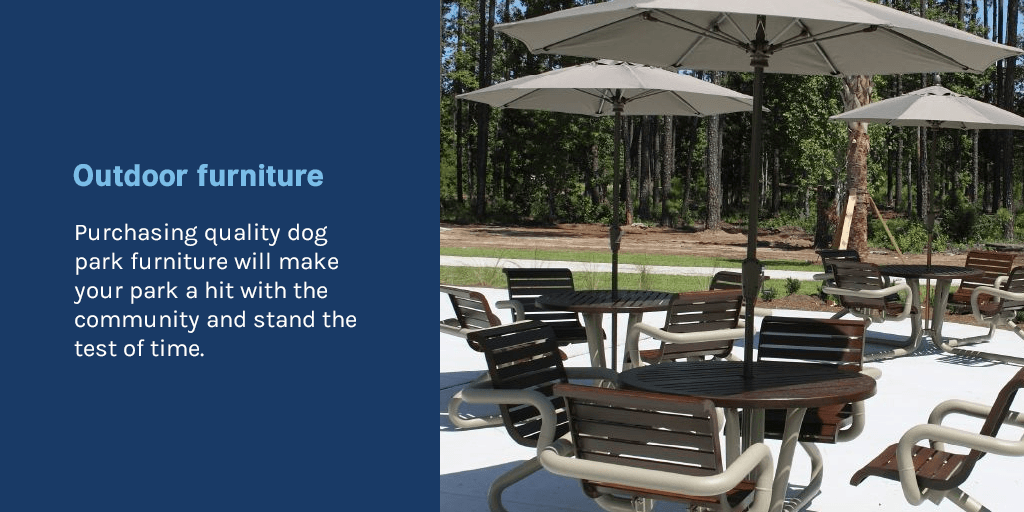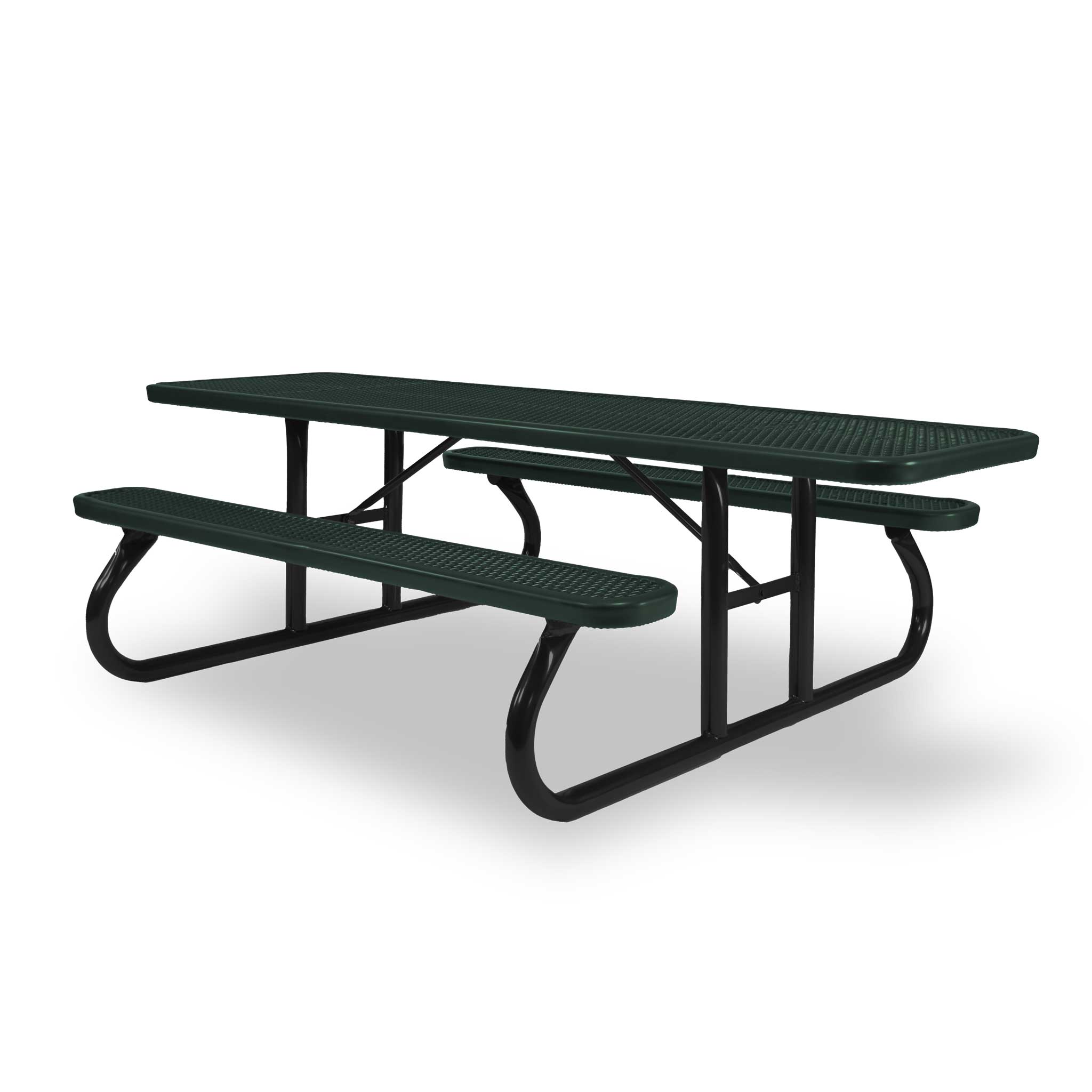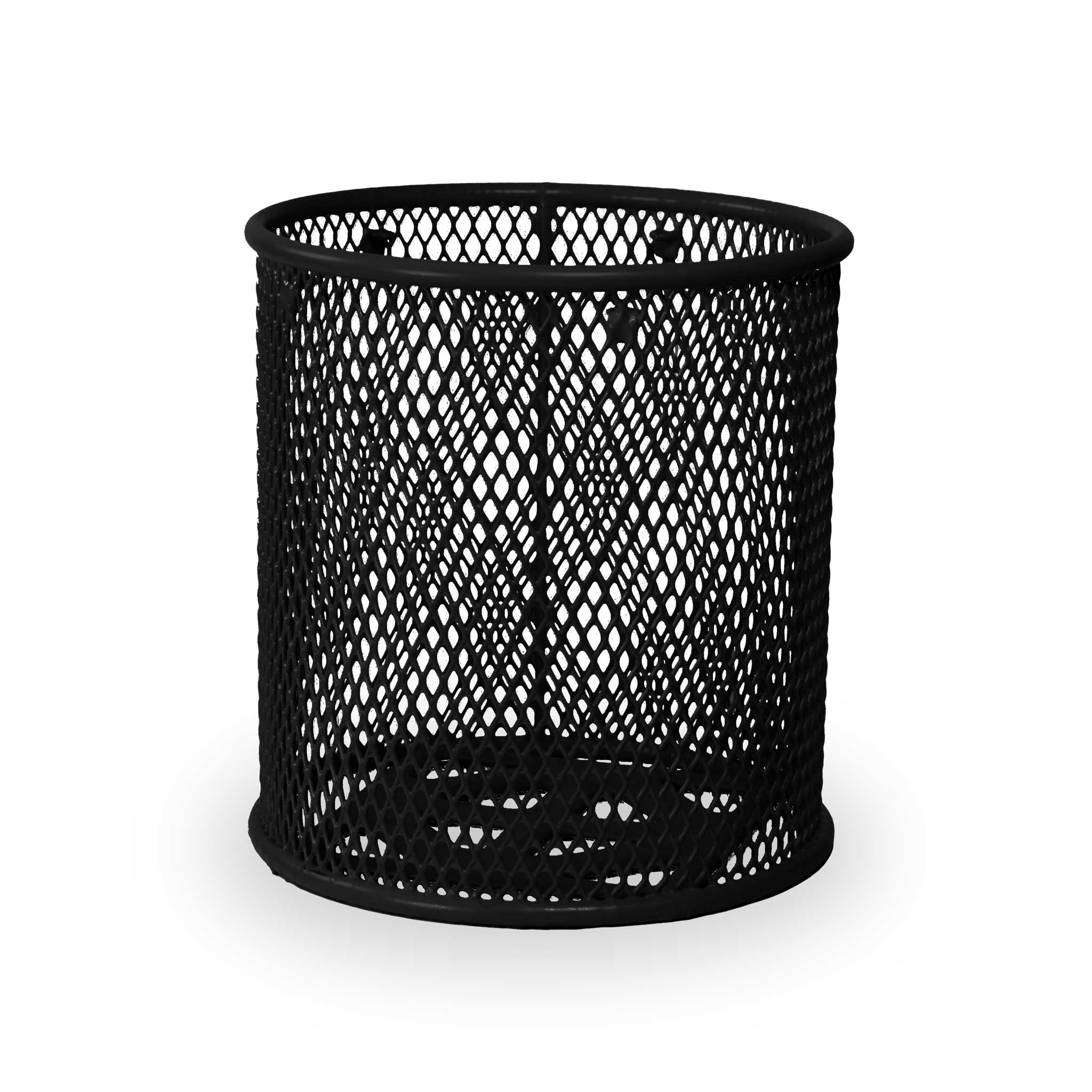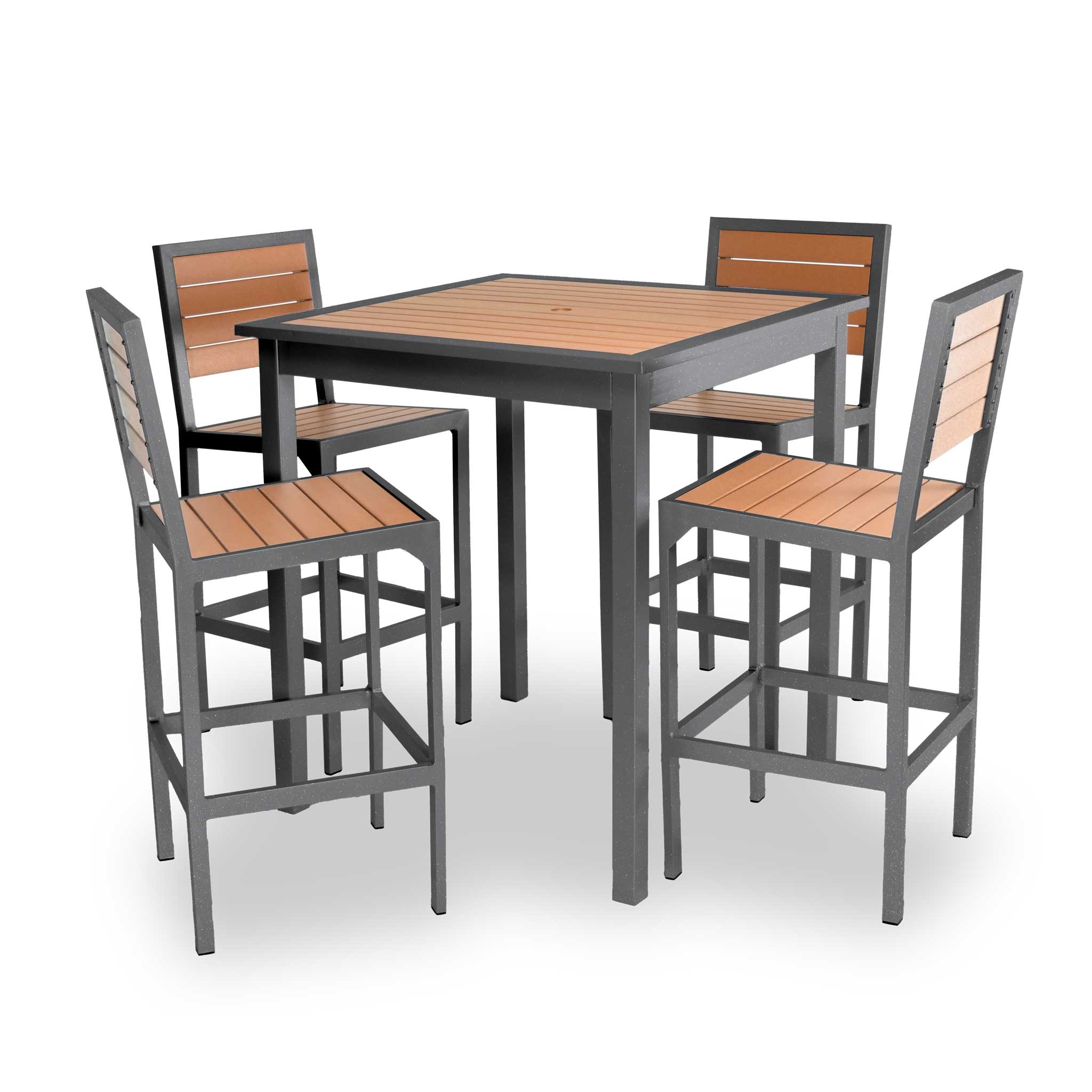Guide to Designing an Appealing Dog Park

Design Guide | Nov 30, 2021
The emergence of the COVID-19 pandemic caused a worldwide shift in priorities. It’s now more critical than ever to have outdoor areas where people can soak up the sun and breathe fresh air while safely socially distancing.
Dog parks are an excellent example of this shift in priorities. While they were popular community amenities before the COVID-19 era, demand for them has skyrocketed in many areas of the country. As a way for dogs to enjoy a safe, open space to run and play, dog parks offer a solution to urban living and puppy parenthood.
The parks are typically fenced-in areas with large open spaces to allow dogs of all shapes and sizes the freedom to play as they naturally would. The dog park can stand alone, or be one convenience in a larger park or playground. It’s imperative to create the space for people just as much as it is for their dogs. After all, pet parents choose where to take their furry loved ones. Creating an appealing dog park — including using attractive outdoor furniture, creating a functional dog park layout, and including many outdoor amenities — is essential for its success.
Read the full article about dog park design ideas or jump to a specific section:
- Why Are Dog Parks Necessary?
- Where to Get Started
- 1. Create a Coalition
- 2. Define the Park’s Goals
- 3. Budgeting and Fundraising
- 4. Design the Park
- Features for People
- Features for Dogs
- 5. Park Maintenance and Continued Success
- Setting Rules
- Outdoor Maintenance
- Design Your Dog Park With Wabash Valley Site Furnishings

Why Are Dog Parks Necessary?
Dog parks are fundamental in urban and suburban areas. For example, a suburban homeowner with a spacious, private yard might still want opportunities to socialize themselves and their pups. Dog parks are essential in urban areas because of the relative lack of green space for dogs to enjoy. And naturally, dog parks are vital for dogs who need off-leash chances to play and exercise.
The parks allow dogs to embrace their natural instincts, encourage them to become comfortable around other dogs and people and enjoy the freedom to run and burn off excess energy. Dog parks also allow fellow dog owners to meet, increasing their sense of community.
How to Start Creating A Dog Park
As a design or engineering professional, you are probably familiar with the numerous processes involved with starting a project and bringing it to fruition, from funding efforts to opening day. Dog parks are no different, and having many design ideas is an excellent place to begin. So let’s learn more about where to start creating the dog park of your client’s dream.
There are many checklist items involved when bringing a dog park to a neighborhood. The necessary actions will vary for each project, but some general steps include the following.

1. Create a Coalition
Community members can accomplish incredible things when they collaborate toward a shared goal. First, organize a group to handle the initial logistics of planning a dog park. This coalition can consist of professional project planners, a group of local dog lovers or both. No matter who joins, they should be passionate about the project and bring their strengths to the table. Designating roles early in the project may avoid any unnecessary conflicts and obstacles hindering completion. Group members should also delegate responsibilities to different departments of the park coalition, guaranteeing all necessary steps to take the park from an idea to reality will happen.

2. Define the Park’s Goals
After creating a coalition to plan the dog park, the next step is to take some time to establish the group’s goals. Here, it’s essential to be specific. Working toward a well-defined list of goals will encourage clarity and selectivity throughout the process.
Some goals for the dog park might include:
- Community engagement
- Providing a safe place for dogs to play and socialize
- Better lives for dog owners who have opportunities to meet like-minded people
- Increased green space
Whatever your project’s objectives are, one way to display and share them is by writing a mission statement. While mission statements can and often should evolve, it’s beneficial to define one from the get-go. Mission statements can help keep the dog park planning team accountable and legitimize the park’s place in the community. They also clarify the park’s expectations, benefits and needs. Display it prominently to ensure all park patrons can see it, such as on a community bulletin board or a sign near the park’s entrance.
One example of a mission statement is: “Our dog park aims to enrich the lives of the community by providing a safe place for residents and their dogs to play, socialize and promote responsible dog ownership. The park is a community-supported effort. We ask all visitors to follow these rules, whether they are dog owners or not.” Your dog park coalition can add anything you like to your mission statement, provided it fits the park’s needs and goals.

3. Budgeting and Fundraising
After developing a mission statement, the planning team can begin deciding on a budget and raising the funds necessary to build the dog park. Start by considering the park’s initial costs and maintenance. Other expenses may include:
- Grand opening event(s)
- Advertising
- Grass or turf
- Lawn maintenance
- Fencing
- Seating
- Lighting and other safety procedures
- Garbage removal
- Water fountains for people and their pets
- Restroom facilities
- Permits and other legal necessities
After totaling all these factors, it’s time to begin collecting the money to make the dog park a reality. Some dog parks are community-funded, like through the local parks and recreation department or another government office. Private funds are another way to pay for the dog park. Appoint a fundraising subcommittee within the dog park coalition to organize events at local schools or restaurants.
4. Design the Park
Dog park design ideas start with finding the perfect location. Geography may play a significant role here. For example, if the park will be in an urban area, ample space might be more challenging to find. Selecting a safe, accessible and centrally located site is also vital for the park’s success. Any factor that would make the park hard to find or unwelcoming to would-be patrons will adversely affect its success.

Features for Dogs
The dog park’s goals, location and design are essential parts of planning a dog park. However, its features are arguably the most critical. Consider what amenities would benefit dogs and their owners and make the park stand out.
- Separate play areas: Since the dogs are the guests of honor at dog parks, start by addressing and meeting their needs. Imagine designing a playground for dogs with plenty of places for them to play. A large, open area with a wide entrance is essential. If the park is too small, there won’t be enough room for many dogs to roam freely. Also, having a narrow park entrance can create a nerve-wracking situation for dogs with anxiety. Nervousness can cause aggression that might create a dangerous situation. Creating areas for small and large dogs to congregate will also lead to a safer environment for all. Like-sized dogs should play in the same place. Older dogs would also benefit from playing in an area with smaller dogs. They move at a slower pace and may get hurt playing with younger or bigger dogs. Dog owners can also use smaller spaces for obedience training.
- Play features: While exercise keeps dogs physically healthy, don’t overlook the need for mental stimulation and challenges. Including an agility park, with holes for the dogs to jump through, poles for them to jump over and other obstacles will build their skills. You might also consider adding other play features like climbing hills, toy fire hydrants and tunnels for running through.
- Drinking facilities: When dogs run, play and exercise, they might get dehydrated without drinking water sources like fountains. Running water is best, as it is less likely to harbor and grow harmful bacteria. However, if a still water source such as a pond or lake is part of the dog park design, owners should practice proper water hygiene to ensure no dogs get sick if they drink the water while swimming or getting refreshed.
- Safe plants: Greenery is a tremendous advantage of creating a dog park, especially in an urban setting. For example, trees are an essential part of dog park design. They provide shade, which dogs and people need to avoid overheating and sun damage. Your park planning needs to account for measures to protect trees from frequent urination. It’s also essential to choose animal-safe plants. Sago palm is the most commonly found plant that is harmful to dogs. The symptoms dogs can experience from consuming sago palm can cause liver damage and even death. Tulips, aloe and daises are also among some of the top harmful plants for dogs.
- Surfacing materials: For your dog park layout, natural grass is not always the best option. Grass can quickly turn into a slippery, wet, muddy mess in rainy weather. A more sustainable choice for the dog play area is a turf material that can withstand lots of wear and tear from the dogs and the elements. For walking areas, a brightly painted material similar to tennis courts is best. This material doesn’t get too hot in the summertime or in year-round warm areas.

Features for People
Even if you are building a park primarily for dogs, don’t forget to provide features for their humans! Amenities such as restrooms, drinking fountains or possibly a snack bar will keep dog owners happy and coming back. Also, an easily accessible public bulletin board makes an excellent place to post news about the dog park, fundraising opportunities and other announcements. This simple addition is an easy way to keep your community informed.
Other must-have dog park features include the following.
- Outdoor furniture: Purchasing quality dog park furniture will make your park a hit with the community and stand the test of time. While trees provide natural shade, outdoor furniture with built-in shade is excellent for furnishing a dog park. It combines a table with bench seating and a hardcover roof panel. Benches with covers are also an ideal option for areas around the edges of the dog park.
- Trash receptacles: Trash receptacles are necessary for both human and canine visitors. Clearing waste is essential to keep the park looking clean and safe for dogs to be around. Installing trash receptacles with a built-in doggy bag dispenser can keep dog waste to a minimum. Wabash Valley Site Furnishings’ Inground Mount is an excellent option because it puts trash safely out of the reach of curious dogs who might feel tempted to dig through it. With 12 color options, your team can choose what color best fits the dog park design.
- Effective signage: Posting the dog park rules, including hours of operation and safety procedures, is a must-have while designing a dog park. Instructions for cleaning up dog waste promote a clean environment for all visitors. Also, signs indicating various park entrances and exits are crucial safety features for dogs and their humans.
- Lighting: Dog park lighting is a vital safety measure for dog park design. Overhead lights can provide more time at the dog park, especially during the fall and winter, when days are shorter. Having overhead lights may also encourage dog owners to bring their dogs to go for a run to dispel some energy before going to work. Installing ample lighting near the entrances and exits and over signage is a best practice.

5. Park Maintenance and Continued Success
Maintaining a clean, welcoming park is essential for its ongoing success. People will enjoy visiting a park that looks new and inviting, with tidy landscaping and freshly mown grass. By setting rules and inviting the community to participate in its upkeep, your park will continue being a crown jewel for the neighborhood.
Setting Rules
One way to maintain a dog park is to create and enforce guidelines for its use. The rules might vary for each park and its needs. Some examples include:
- Dog owners are legally responsible for any injuries their dogs may cause.
- All dogs should have up-to-date vaccinations.
- Owners must remain with their dogs at all times.
- Young children should also be under supervision for their safety.
- Dog owners must clean up after their pets.
- Dogs should not visit the park if they are aggressive, disruptive or in heat.
- Dogs should remain on a leash when entering or exiting the park.
Like the park’s goals, its rules can continue evolving, depending on changing needs.

Outdoor Maintenance
Dogs are messy — we all know that. But dogs aren’t the only factor working against the features at dog parks. Year-round exposure to the elements, like rain, snow, excessive sun and graffiti, can damage the grounds and furniture. Therefore, ensure any features you add to the park are durable enough to hold up to outdoor use. It will create a better and long-lasting park the community can enjoy for years to come.
The city may fund park maintenance. However, not every city can handle the extra cost. Even if the city provides some funding, it can be an excellent idea to invite community members to chip in and foster a sense of ownership. Planning volunteer park cleanup days can help people who frequent the dog park ensure it stays clean and safe for them and their furry family members. Also, celebrating and embracing the community by hosting events at the dog park will encourage its continued success.

Design Your Dog Park With Wabash Valley Site Furnishings
Furnishing your dog park is easy with Wabash Valley. We rigorously test our outdoor furniture for durability, which is necessary for furniture constantly exposed to the elements. We also offer various furniture types, styles and finishes, such as benches, picnic tables and tables with shade/sun covers. We formulate our finishing techniques to prevent damage from graffiti, rain spots and other types of staining. In addition, we offer bulk product discounts because we love helping our customers maximize their investment.
We are passionate about providing you with attractive, cost-effective, quality products to complete your projects. Start now by exploring our product options or contacting us to build a quote today!
Categories
Recent Posts
Sign up for our newsletter
Share this post:




